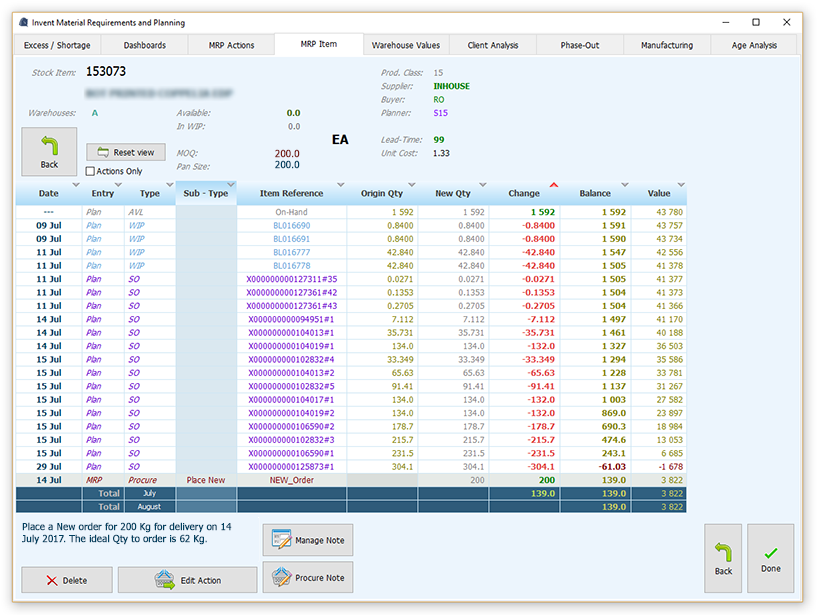MRP & Supply Chain Automation
Material Requirements Processing
MRP is a standard function of most ERP systems, but is usually tuned for the most basic acquisition models on the purchasing side with more care going into the Sales order side and Job planning sides. This model suits the average mass-production company very well, but there are those who do custom batches, producing different products daily or having short and infrequent runs. Contract manufacturing is one such area, others are tool producers and packaging producers.
These kinds of
manufacturing/production factories have a much more difficult supply-chain planning requirement. If you procure stock that you might only use once (making any excess a loss), or you are buying large quanities of a stock which will tie up cashflow for months (perhaps due to infrequent runs), or if you often run into shortages of long lead-time stock - then you need a much more clever MRP system that will keep supply in line with usage along a tight plan and with early-warning flags when
future production is in danger.
MRP Enhancement Options
Planning for materials can be a very specialized system, but may well be incoporated within other Systems (Such as our Production Planning or Inventory Planning and ERP enhancement Systems). In our MRP system implementations a lot more is customizable than the standard off-the-shelf systems:
- Treat Suppliers different - Not everyone is equal, and their OTIF ratings should be considered when procuring. If a Supplier mostly deliver a week late, should we order a week earlier from them?
- Suggest moving specific orders forward or backward, or amending orders where this will advantage the cashflow and excess generation.
- Consider Lead-Times for supplied stock carefully when planning. Ensure orders are placed well within lead-times and warn where the requirement cannot be achieved due to lead-times.
- Plan cleverly around managing minimum order quantities (MOQ). For example: Say you need 3000 bolts this month, and 3000 bolts next month of an infrequently used size, but the MOQ is 5000 bolts. A normal ERP implementation will ask to buy 5000, and next month it will see you have used 3000 so 2000 remains, but you need 3000 again (so you are 1000 short), so it will order the full MOQ of 5000 again - it knows no better. Our systems will buy 6000 this month so you have enough for both months and no excess whatsoever. There are many optimizations like this that can be applied, and they can all be adjusted to suit every stock item.
- Understand the financial implications. Know how the order-book value will change before-hand and directly change problem purchases before the buyers start placing orders.
- Understand before-hand what the stock situation will be when the MRP is executed. How much Excess stock will result, and which Jobs are in danger of being moved out.
Making Purchasing Easy
Give buyers a clear instruction list on which orders to place, cancel, amend or move. See directly how stock will be consumed (for WIP or Sales-Orders) on any item and how existing orders will replenish it and what the resulting balances will be. While showing all that, display what the proper action is to take, plus what the ideal action is (we might have to order 200 Kg due to the MOQ, but if the supplier is willing to run less or already have stock on-hand, we might ideally only want
62 Kg, as is the case in this example):
(Please Note: The following example images are all from actual live systems, so some sensitive values are obscured here, but in the working systems they appear normal.)

Automate it all once the system tested correctly. Place the order in ERP, mail the supplier or use electronic web API. Save time, save money, and reduce finger errors. There are very few limits to what can be achieved in a bespoke system.
